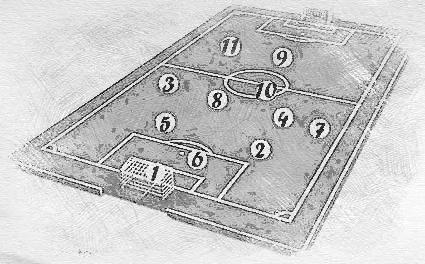
Zona Mista: FM21 Recreation
This is the follow-up to my last piece, which was the first part in the Zona Mista tactic guide. It can be found here. Whereas that article gave an introduction to the Catenaccio roots of Italian Game, this one will examine the player roles you will actually need to set up the Italian counter-attacking style in FM21.
The Club and Recap
So I thought it wouldn’t be a Zona Mista recreation without actually using an Italian club, right?
For this recreation I decided, perhaps unsurprisingly, to go with the Rossoneri. But it is not just because they are my favourite childhood club.
I believe that in FM21 they have become an ideal team to set up and try out this system. In recent years, Milan managed to get some very interesting players such as Brahim Diaz, Jens Petter Hauge, Sandro Tonalli, Alexis Saelemaekers, Rafael Leah, Theo Hernandez, and Ante Rebic. Essentially the squad has been restructured over the last two seasons to become a creative and offensive powerhouse. Ideal for a structured counter-attacking approach, especially against the current Serie A giants Inter and Juventus. In Europa you will be able to test your mettle against stronger teams.
I like the fact that winning domestically or continentally is going to be a challenge (given media prediction of 5th place finish). This combined with the infusion of exciting talent makes the FM21 experience with AC Milan more similar to what Inter was like in 1960s under Herrera. A sleeping giant on the cusp of greatness.
Just a little reminder, of what sort of formation I am trying to recreate. Structurally (from solely role perspective) there are virtually no differences between Herrera’s Catenaccio and later Trapattoni’s Zona Mista variation. From 1960s to mid 1990s it always looked like an asymmetric 4-4-2 with four defenders, four midfielders and two strikers. As I mentioned in my previous article, the major exciting difference was under the hood in how Zona Mista took the best elements of Catenaccio and Total Football and “mixed” them. It did this by using a blend of zonal marking and man-marking.
Also there was more focus on some players performing multiple jobs and operating simultaneously across different strata such as in attack, midfield and defence. Essentially with Zona Mista, Italian clubs were trying to integrate the free-flowing, hard-working, team-focused Dutch Total Football into the more structured highly-disciplined Italian football approach. In a way it was the strict discipline of Roman legions meets the Sun Tzu’s “Art of War”. The best of two very different football cultures. And it really worked!
The Recreation and Striker Roles
This is how I see the formation in FM21.
The roles and their positioning are mostly decided on, except I am still unsure about my two strikers. In the last article, some readers wondered at the lack of Trequartista and I try to address it here.
In the game Trequartista seems like a perfect Fantasista equivalent. But initially I was worried that he would not drop deep enough and get involved with build-up like I envisioned Sandro Mazzola doing in real life. Yet if you play a right kind of hard-working player in the role, Trequartista can indeed drop deep and play a capable support role in a two striker partnership.
So because I am planning to mostly use young Brahim Diaz in this role who is not exactly a work-horse, I decided to go with a little compromise and put him in AMC position. This way he will have more space and time on the ball to create his magic without necessarily drifting about aimlessly or playing right up against the shoulder of opposition defenders. Also it should make a positive difference when he is closer to our midfield to receive passes. Of course initially I would watch the matches in full to see how the striker partnership fares. Overtime I expect his work rate and teamwork to improve considerably by which point I would consider moving him up to striker strata. Or until I get a more hard-working replacement. He is only on loan after all.
So starting with the strikers I will present my reasoning for the role choices and how I expect them to operate within the greater tactic. Keeping with the tradition, it is going to be a very regimented guide where each player is given a number to exactly define his ideal role. And once I select someone as Regista for my system, he will only play as the Regista, and that is what I will expect from his training. The classic numbering system is perfect for this. But I will also try to use the correct Italian names for the roles too.
#11 – Fantasista or Seconda Punta
I already gave the reasons why I went with AMC position to recreate Mazzola role. The choice of Trequartista also seems fitting, at least from the game description perspective. I really need a player that operates across both Attacking and Midfield strata. So inline with his midfield duties he needs to find space for himself to craft out chances his striker partner or as a second striker himself finish chances by himself. A very well-rounded footballer and the first real infusion of Total Football into the formation. Just looking at the PI automatically set for the role, it should really be a player that you feel confident enough to give FULL creative and attacking freedom. Here is my Fantasista:
So maybe it is a bit of risky choice but for my First Team Seconda Punta I chose the young Brahim Diaz. Perhaps Ibrahimovic or Hakan Calhanoglu would have made more sense to you. Whilst they are both very creative attacking players, unfortunately they both lack in one important aspect which Sandro Mazzolo had. They are not the fastest (especially aging Ibrahimovic). To perfectly compliment the Prima Punta, The Beast, traditionally the slower, stronger finisher of the two, my Fantasista should ideally be more nimble and pacier. The aspects which Diaz still has a lot of room to develop. The other aspect that I will be training intensely is his “attacking intelligence”, giving special attention to his Anticipation, Composure, Decisions and Off The Ball. But again because of his age and potential I really expect him to improve those rapidly and really grow into the role.
#9 – Prima Punta
I reworked my original conception of the role from that of Advanced Forward to Complete Forward(A). I’m sticking with the idea of giving complete freedom to my strikers. After-all, they need to operate self-sufficiently in case they are isolated from the rest of the team. As is often the case with counter-attacking tactics. The description of CF just perfectly describes what I need from this player. While not the same creative fulcrum that his Trequartista partner is, Prima Punta will be required to fashion chances for himself as well get on the end of team moves. And he needs to perform his job with complete freedom. Even with Attack duty he will craft out chances for himself while spearheading attacks. Thus here is another role where you need a complete Total Footballer with good overall attributes. As I mentioned before he’ll need Jumping Reach and Heading as a bonus.
And this is my Prima Punta! Very happy to be using Rafael Leao again after managing him in both FM17 and FM18 with Benfica where he was my favourite, by far, wonderkid. At the start of FM21 he has already developed into a decent young player but still has a loads of potential to be moulded into one of the most complete strikers in modern football. Very lucky to use his talents again with Rossoneri.
The Midfield

The themes of complementary functions, self-sufficiency and balance carry over into formation’s midfield where its four midfield roles are found. There we have the classic trifecta of “Runner” (Mezzala), “Destroyer” (Mediano), and “Creator” (Regista). Together all three roles are capable of creating chances, finishing those chances and protecting against opposition attacks. While it is ideal to have complete footballers here, its is actually not a problem if the players here are only great at doing their specific function. In fact I would recommend finding specialist players that excel at one thing, be it playmaking or shutting down enemy. With maybe the exception of the mezzala. That’s a special role.
#8 – Mezzala
The Italian equivalent of a good old English Box-to-Box Midfielder. As such he must be a bit of a jack of all trades, capable of performing various tasks for the team. Essentially your energizer bunny on the pitch.
He shouldn’t shy away from the “Darker Arts” either, as sometimes his grit will be needed to regain possession or aid the Mediano/Destroyer in shutting down the opponent. But mainly your mezzala will be one of the main links between the strikers and the rest of the formation. Thus he is the Needle Player.
That is Needle Player is a central midfielder who is used to maintain ball possession under intense pressure. As the name suggests he is supposed to move like a needle through the opposing formation. Such players have become especially important since 1970s as defences have evolved to give attacking players less time on the ball. Smaller players with low centres of gravity have especially excelled at this. Such player must also be able to receive fast passes and control the ball at speed and then use his excellent vision to assess the direction in which the play must move to avoid losing possession.
At Milan, there is no one better at threading the needle through the opposition midfield and defence than the one and only Franck Kessie. As you can see, his attributes are perfect for the Box-to-Box/Mezzala role. But especially key for his ball-carrier/runner/needle function are his exceptional Balance, Stamina, Strength, Aggression, Bravery, and Work-Rate. In this role, I especially love players with the magical combination of high Dribbling, Off the Ball, Balance and Strength. That is the the type of elusive low-centre of gravity dynamite that is rare to find. But can absolutely win you games on its own.
#4 – Mediano
The Master of The Dark Arts of Football. This is the role for him. You know rather then describing the kind of player you will need here, I will just quote a paragraph from my favourite football history magazine, thesefootballtimes.co It gives a perfect example of Zona Mista’s most feared player. Master of The Dark Arts indeed.
The brutality was as effective as it was violent. The claustrophobia inflicted on his opponents was stifling to the point of suffocation. Reputations were swept away as easily as a standing leg when receiving the ball. Such was its effectiveness and the relentlessness with which it was pursued, Claudio Gentile’s performances in the second round of the 1982 World Cup were a juxtaposition of exquisite barbarism.
Gentile: perhaps the most inappropriate name ever afforded to a professional footballer. The Italian defender wore his reputation as a tough, uncompromising defender, or as the more clickbait YouTube video titles would have you believe, ‘The Hardest Man in Soccer’, as a badge of honour. But there was nothing gentle about the man born in Libya and raised in Italy on a diet of Catenaccio and traditional Italian physicality. “My character was not to intimidate, it was to show I was the boss on the field. You have to be gritty and determined. At certain times you have to know ‘how’ to foul,” once said the Italian.
While Claudio “Not so Gentle” Gentile did not play as a central midfielder, he always personified the darker side of Calcio for me. And that is exactly the kind of player I want to embody my Mediano role. I don’t need him to score goals. Just to be a constant gritty thorn in the side of my opponents. And to win the ball back as quickly as possible and to pass it on to our more creative players. So far I am still undecided between two roles for this player, CM(D) or BWM(D). Although I am kind of leaning towards BWM. What do you think?
Ismael Bennacer might not seem like the ideal choice as the Destroyer, but he is currently the only one I have. Other than Kessie. But Kessie is more useful as my Mezzala.
Yet Bennacer does have the prerequisite attributes such as Aggression, Bravery, Determination, Tackling, Positioning and Workrate. And with more focused training he could get even better.
#10 – Regista
Pretty self-explanatory. One of the three playmakers of the team. The other two being Fantasista in Attack and Libero in Defence. In most Italian teams of Zona Mista era, Destroyers like Claudio Gentile or Diego Simeone had to be complimented by players Pirlo, Totti or Baggio. At Grande Inter, Herrera had Luis Suarez Miramontes who who followed his favourite manager from Barcelona. At Inter he had the full license to create and could be relied upon to unlock even the most stubborn opponents.
One thing that is very surprising about Catenaccio and what those, who only associate it with “dirty” defensive anti-football, don’t realize is that it was never about hoofing the ball forward. Rather it was an elegant system infused with quite a bit of creative energy. Especially when it came to its three playmaking roles. The Fantasista, Regista and Libero. These were actually 3 players who were the main sources of creativity in a highly structured formation. Without them the whole thing probably wouldn’t have worked. And the way they were positioned there was a rather clear passing lane from the defence all the way to the forwards. And the Regista was positioned right at the centre of it.
As the essential creative link in the formation, Regista needs the typical playmaker attributes. I am not going to list them but you could guess what they are by looking at AC Milan’s own exemplary midfield Regista, Hakan Calhanoglu. He also possess some pretty great individual traits for this role.
Flank Players
Before moving to explain the Zona Mista system’s defence, I think I need to spend a bit of time analyzing its flank players. I believe that these two positions, similarly to libero and mezzala, are key in providing verticality and balance to the whole system. And the best way to explain this element is to give the example of Helenio Herrera’s wide players. In the image below, it was the left-back Facchetti and right winger Jair doing the flank duty for Herrera’s Inter side.

The interesting thing about these two players is that they played in perfect counterbalance to each other. Facchetti was a left-back who played like an inside forward, scoring 59 open-play goals during his time with Inter. And Jair was a natural forward who played like a defensive fullback.
Let’s start with Facchetti. Player like no other. Dani Alves of his time. Truly one of the first complete wingbacks of the era. A naturally left-footed player, Facchetti was famous for his dribbling runs on the goal. Those 59 goals by a fullback is even unheard of today. Even Dani Alves could only manage 34 goals across 554 career games. Facchetti managed to score his 59 in some 470 games. At Inter his role has become something known as Terzino Fluidificante, essentially a deep-lying offensive winger. A wingback if you will.
The formation’s right winger was in many ways similar to the left-back but in other ways his perfect foil. Where Facchetti was seen as a essentially a defender that was expected to transition quickly from defence into attack (in order to add another dimension to Inter’s counter-attack), his right wing partner Jair was the opposite. An attacking winger who was expected to drop deep to contribute to defence. It was a perfect balancing act.
Here we had Brazilian Jair da Costa, who was more used to playing as an explosive forward in his native country. Then at Inter he was converted to a more complex role. On paper he was what Italians called Ala Tornante, or “hairpin” winger, basically a hard-working wide player who would start the match higher up the pitch but then had to track back almost like a fullback at times to cover his side defensively. Somewhat like a Wide Midfielder or Defensive Winger in FM games.
But this was only the first half of Tornante’s function. That is playing as a tireless “returner” to counter-balance Facchetti’s aggressive forward runs from deep left flank. At the same time Jair’s experience as a forward aided him in performing the second part of his function. The moment Inter won back possession and were on the counter-attack, Jair would spring into action. Due to his physical conditioning and pace he was able to surge down the right wing and sometimes act like a third striker. His ball-carrying ability was key when Inter transitioned from defence to attack. “Hairpin Winger” was a very fitting name indeed.
So as you can see, Catenaccio’s left-back and right winger were important roles that have to be discussed separately from both midfield and defence roles. While the two wide roles might initially start in those strata, they are essentially transition, link-up players that operated across the whole field. They were tasked with providing much-needed balance and offensive edge to Inter’s formation.
And this is how I am planning to translate the flank players’ positioning and movement to FM21. Hopefully via the combination of roles and player traits I can recreate this delicate counter-balance between and Tornante. Especially the forward movement from the left flank and right flank winger dropping back from the higher position.
#3 – Terzino Fluidificante
Essentially, there is not much difference between the kind of player you will want to fill both your #3 Wingback and #7 Winger “Tornante” roles. Both need to be very well-rounded players, capable to exceling in both attack and defence. It will be their job to provide much of the formation’s verticality. That is they will need to be able to run back and forth along their respective flank for the whole 90 minutes. And even if the wingback will be more involved in the attacking function of his role, he still needs the Workrate, Positioning and Tackling attributes in order to help the defence when out of possession. That is why I want a deeper role there rather than another winger. So far Theo Hernandez seems like just the type of player I need.
#7 – Ala Tornante
I would probably be happy if I could put another Hernandez-type here. As I mentioned before my Right Winger is a “Hairpin Winger” which essentially operates as a defensive counterbalance to my left wingback. He starts higher up and is supposed to track back and get more involved in midfield and defence. Essentially playing as an advanced fullback. Initially I was torn between a Defensive Winger and Wide Midfielder roles. In the end WM (S) won out because it is a much more customizable role by default. It allowed me to add a few Personal Instructions which I hope will make the role more like a hybrid forward/midfielder/defender.
Again for this to work you will need a very special type of player here. A very hardworking jack-of-all trades winger. One who will work his buns off winning the ball back, tackle hard and then chip in with a goal or two. Think Dirk Kuyt or Park Ji-Sung type of player.
Yeah, a player that won’t take any $#@& from anyone. Especially when outnumbered. A true energizer bunny on the wing.
I believe I have someone at AC Milan who could grow into this role, given the right training focus and attention. Glad to have you on board Jens!
Now because libero is such an essential role to the whole system, it merits a whole article on its own. Therefore, I hope you stick around for the third and final part of my Zona Mista recreation. There aside from revealing the final tactic, I’ll take a look at the role played by the legendary manager Giovanni Trapattoni in the evolution of libero.
Thank you for reading this far! If you enjoyed this article, then please follow us @ Dictate The Game’s Facebook and Dictate The Game’s Twitter. And here are other articles you might like:

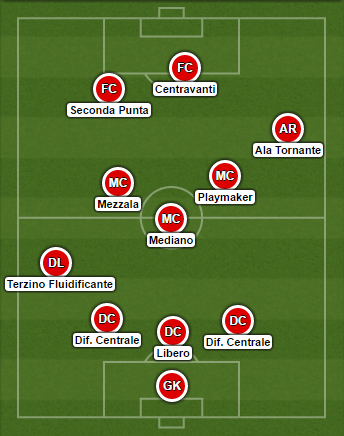
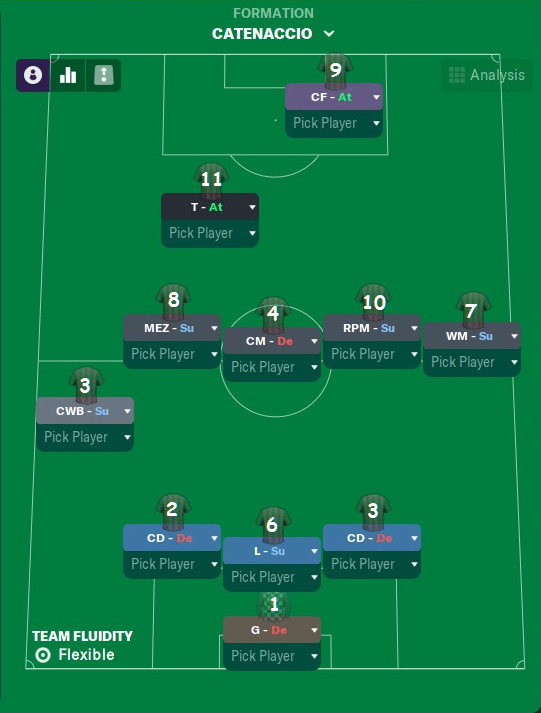



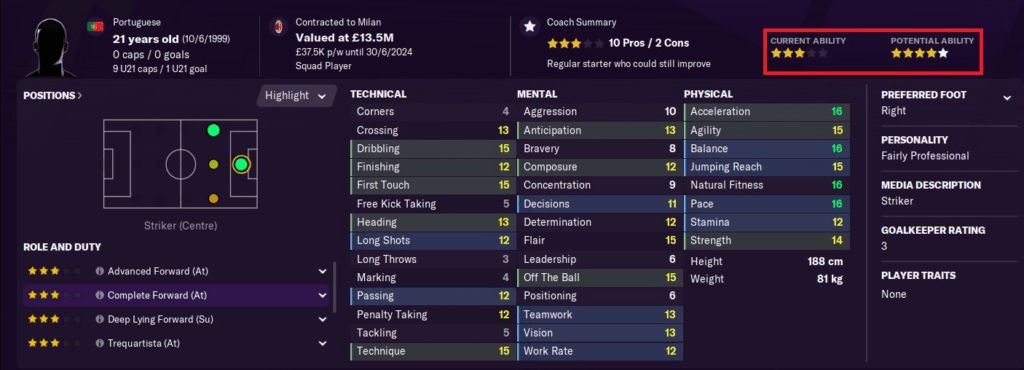

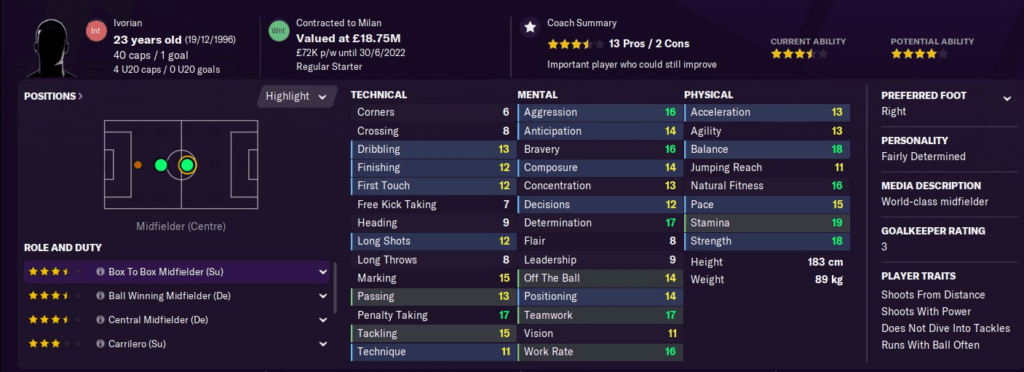


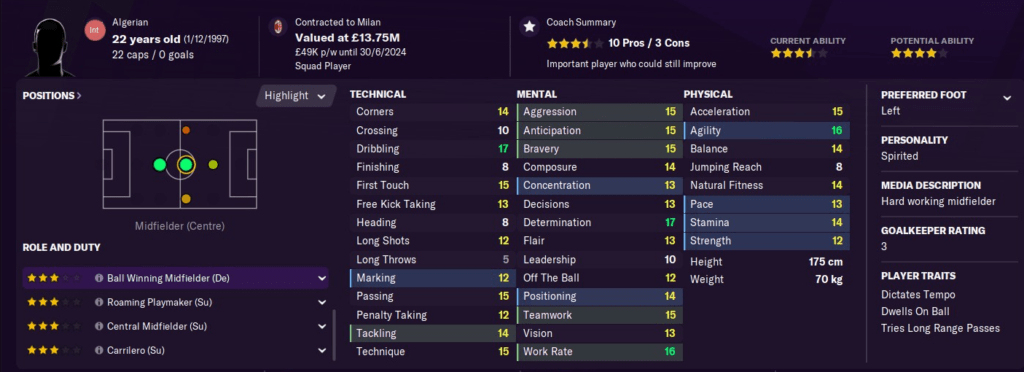


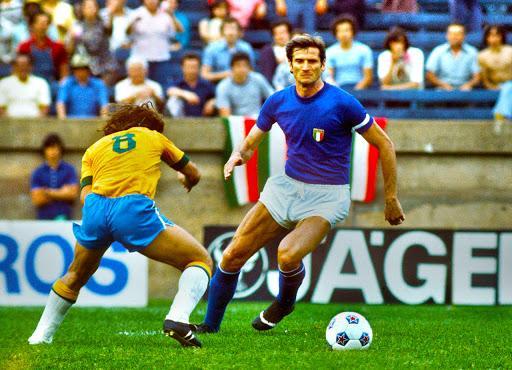

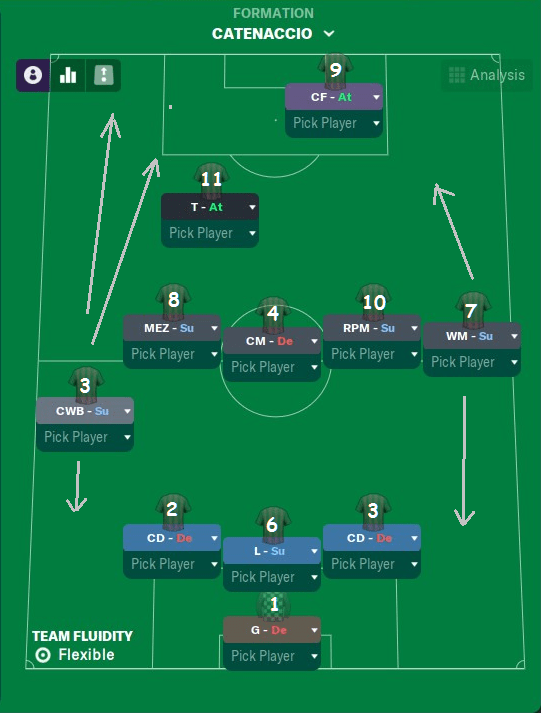

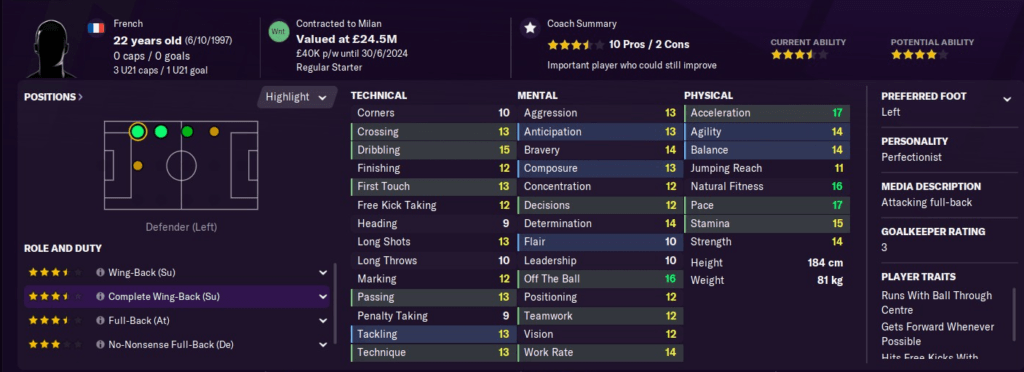

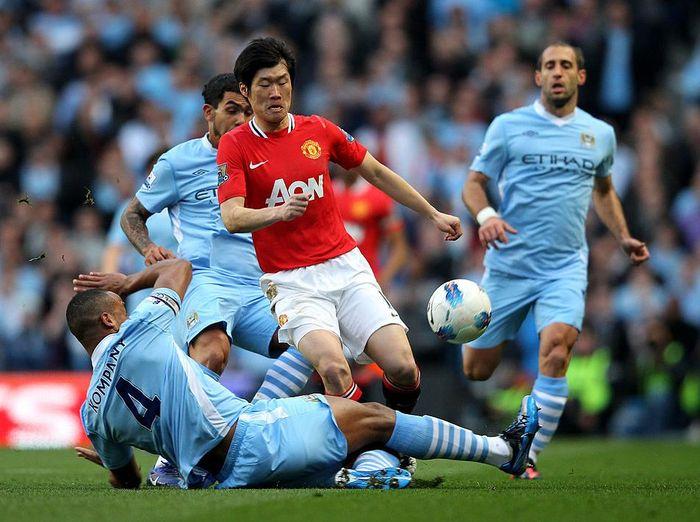
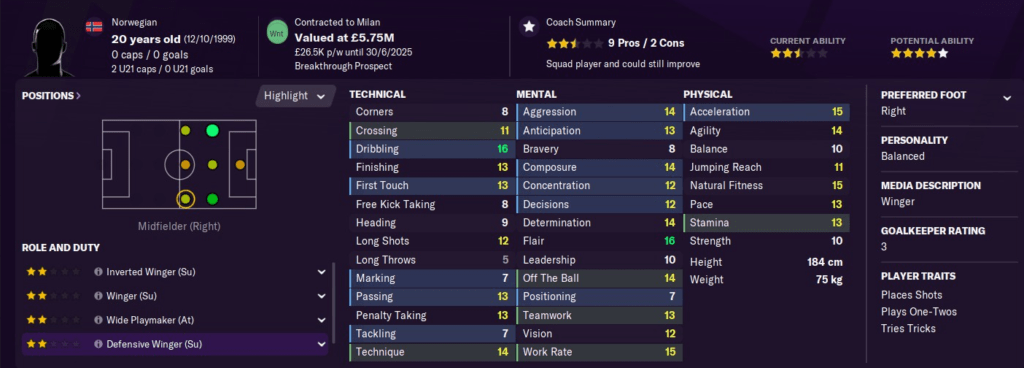
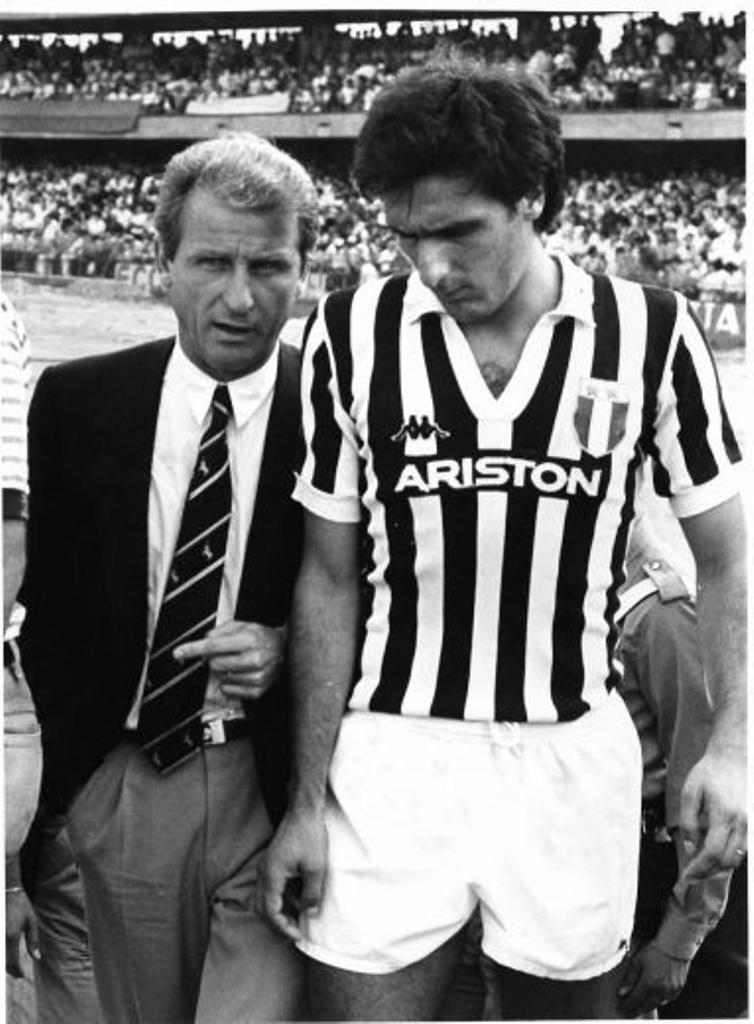
2 thoughts on “Zona Mista: FM21 Recreation”
Very good read as usual! For some inspirations I sugges you to read about the Gasperini’s Atalanta tactic. There are many similarities in the role and in the characteristics of the players.
Waiting the next episode 😉 an Italian football fan!
Thank you! Will definitely research more about his tactics. I think Tifo has a great video about it.